On View
An Unorthodox Show Pairs 8 Botticelli Paintings With Comic-Book Art at the Isabella Stewart Gardner Museum—See It Here
The museum commissioned new prints from a New Yorker cartoonist to pair with eight Botticelli paintings.
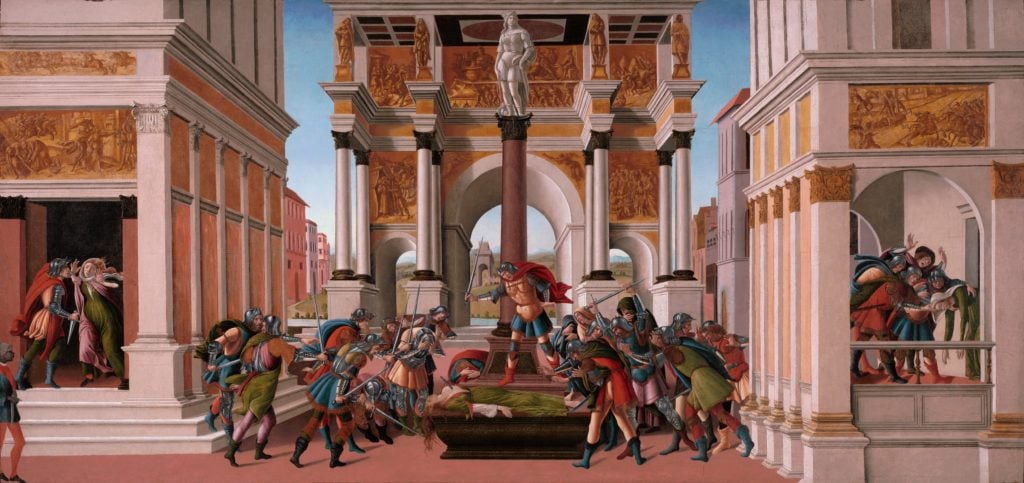
The museum commissioned new prints from a New Yorker cartoonist to pair with eight Botticelli paintings.

Caroline Goldstein

Was Sandro Botticelli a proto-graphic novelist? That’s a suggestion raised in the Isabella Stewart Gardner Museum’s new show “Botticelli: Heroines + Heroes,” which features eight works by Botticelli alongside a suite of prints that the museum commissioned from New Yorker cartoonist Karl Stevens.
“We always seek to explore the intersection of historic art and its resonances today in new works and new forms of artistic expression,” said museum director Peggy Fogelman in a statement.
The show reunites two of Botticelli’s spalliere—painted narrative panels intended to be viewed at shoulder-height—on loan from the Accademia Carrara in Bergamo, Italy: The Story of Lucretia (ca. 1499–1500), a jewel of Isabella Stewart Gardner’s personal collection, and The Story of Virginia (ca. 1500). Though the two works were intended to hang together in the Vespucci palace in Florence, the last time they were together was in the 16th century, “before they left the home for which the pair was painted,” says the museum’s curator Nat Silver.
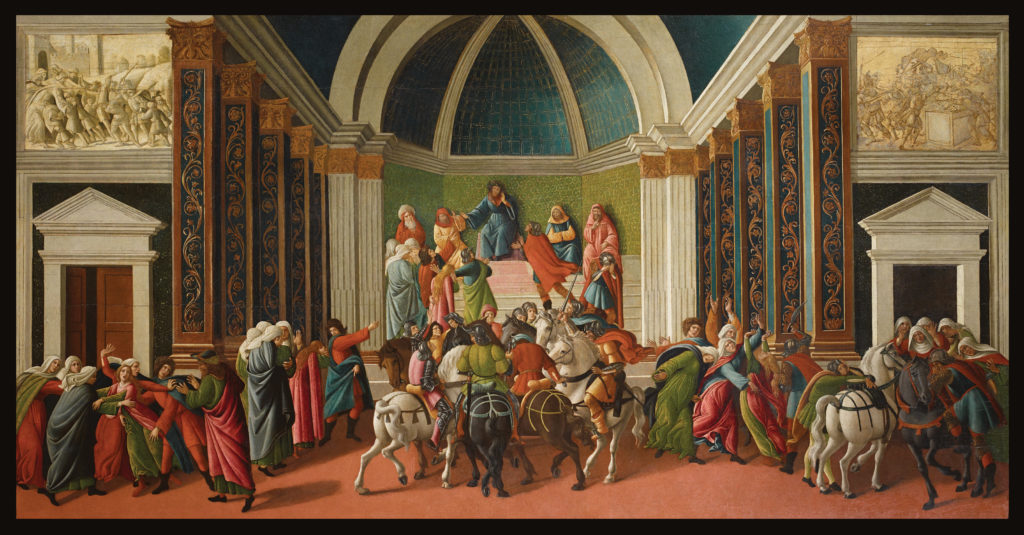
Sandro Botticelli, The Story of Virginia (ca. 1500). Courtesy of Accademia Carrara, Bergamo.
Both paintings are richly colorful tableaux that tell the stories of women who meet tragic ends at the hands of men driven by sexual and violent appetites. Though Botticelli is best known for his secular paintings of classical mythology in The Birth of Venus (1486) and Primavera (1482), which present women as figures of grace and sensuality, the works on display at the Gardner were created toward the end of the artist’s life, and are scenes of moral judgement that served as modern parables for the upper crust citizens of Florence.
When Isabella Gardner acquired The Story of Lucretia in 1894 it became the first Botticelli to enter an American collection, further cementing Gardner’s reputation as forward-thinking patron of the arts. Stevens illustrates this in his ink drawings, which cast Gardner as a heroine who defies convention.
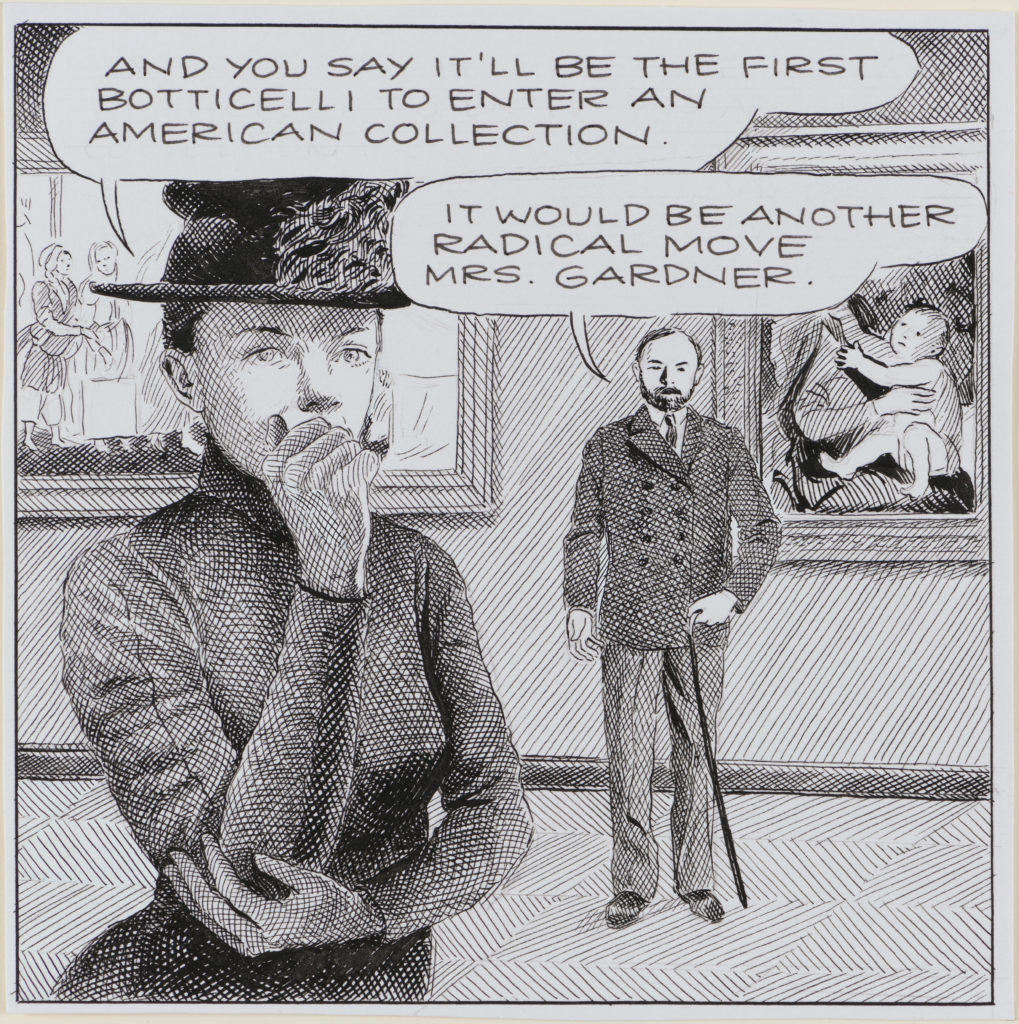
Karl Stevens, Botticelli (2018). © Karl Stevens 2018, courtesy of the Isabella Stewart Gardner Museum.
The spalliere in “Heroines + Heroes” are dynamic compositions that depict various stages of a larger story and that feature a single protagonist. These elements are highlighted in the juxtaposition with Stevens’s contemporary comic strips. In addition to Lucretia and Virginia, the show also brings together three of the four panels from Botticelli’s illustration of Zenobius, a Christian saint, plus an unfinished version of Adoration of the Magi on loan from the Uffizi.
See more works from “Botticelli: Heroines + Heroes” on view at the Isabella Stewart Gardner Museum in Boston through May 19, 2019; the show is accompanied by a new fully illustrated catalog with more insights from curator Nate Silver alongside Botticelli’s works on loan from Europe and American collections.
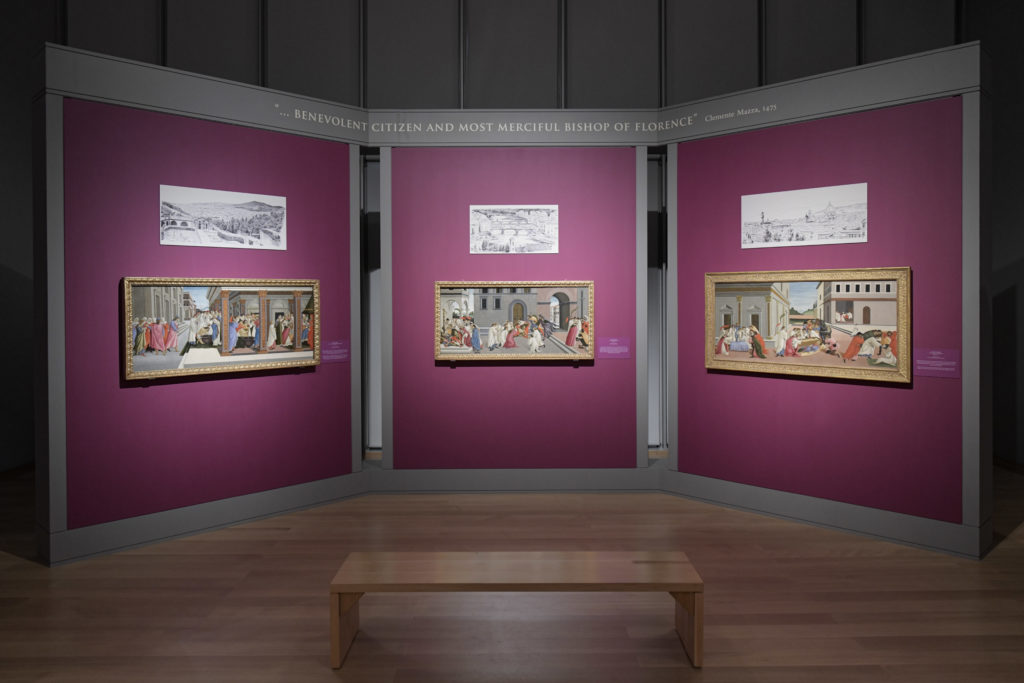
Installation view of “Botticelli: Heroines + Heroes.” Courtesy of the Isabella Stewart Gardner Museum.
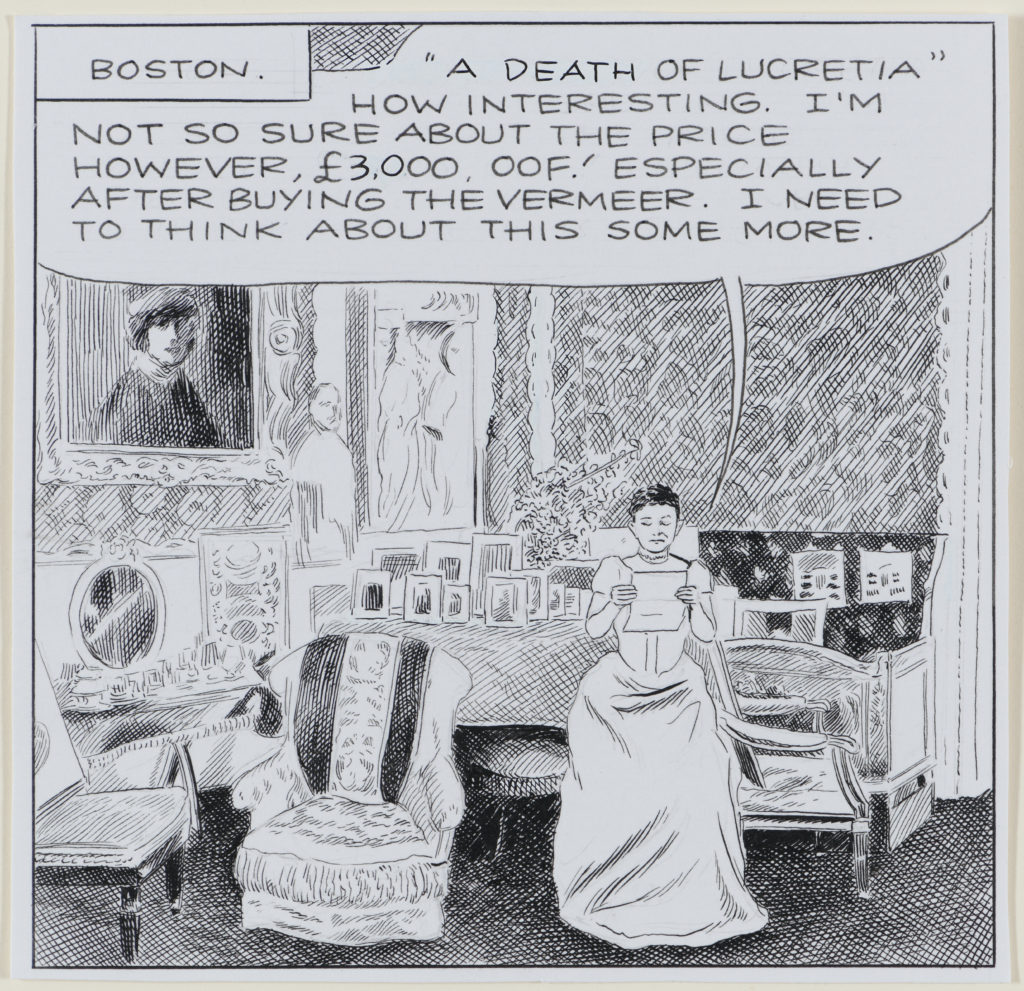
Karl Stevens, Botticelli (2018). © Karl Stevens 2018, courtesy of the Isabella Stewart Gardner Museum.
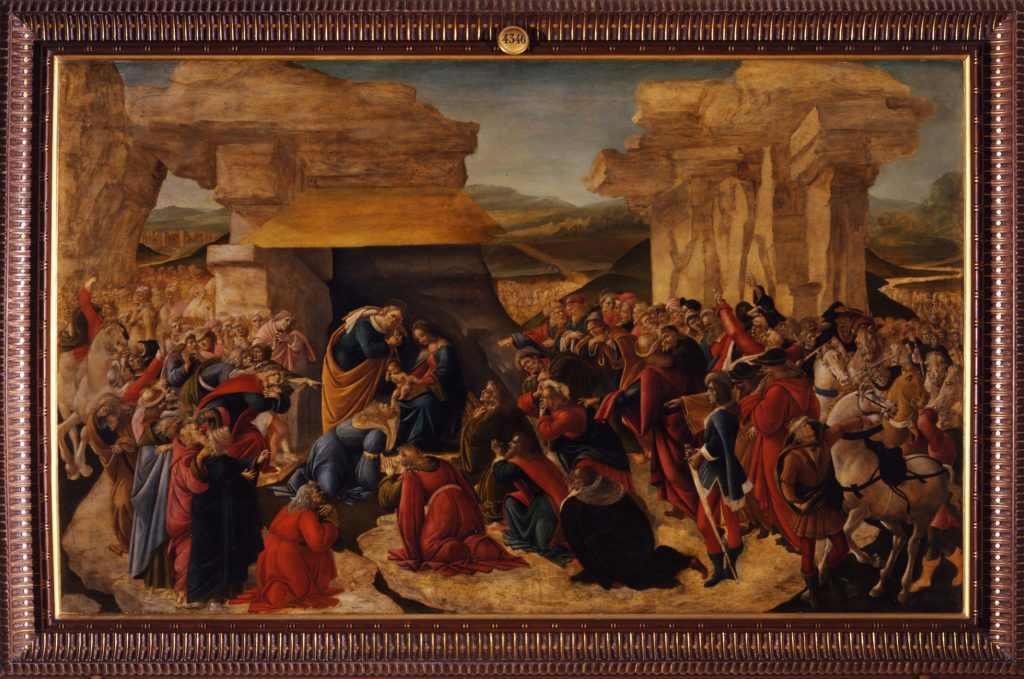
Sandro Botticelli, Adoration of the Magi (ca. 1500). Courtesy of the Gallerie degli Uffizi, Florence.

Installation view of “Botticelli: Heroines + Heroes.” Courtesy of the Isabella Stewart Gardner Museum.
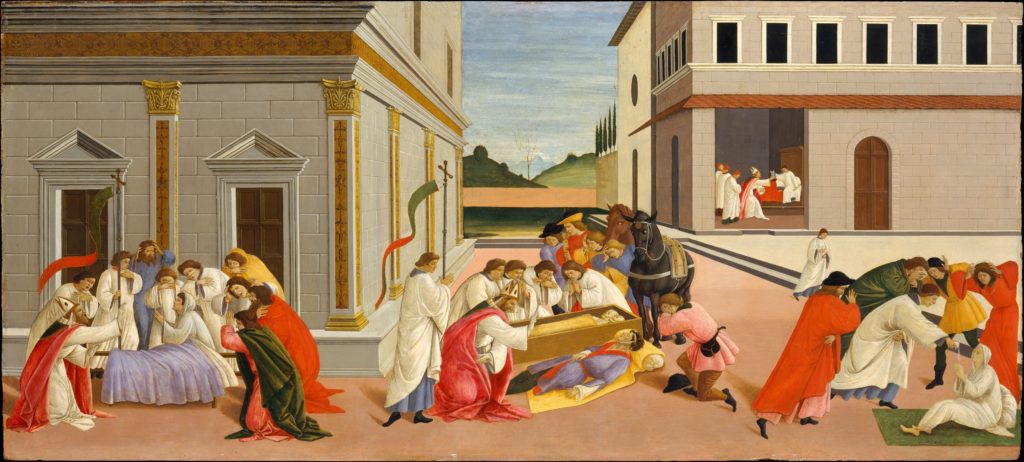
Sandro Botticelli, Three Miracles of Zenobius (ca. 1500). Courtesy of the Metropolitan Museum of Art.
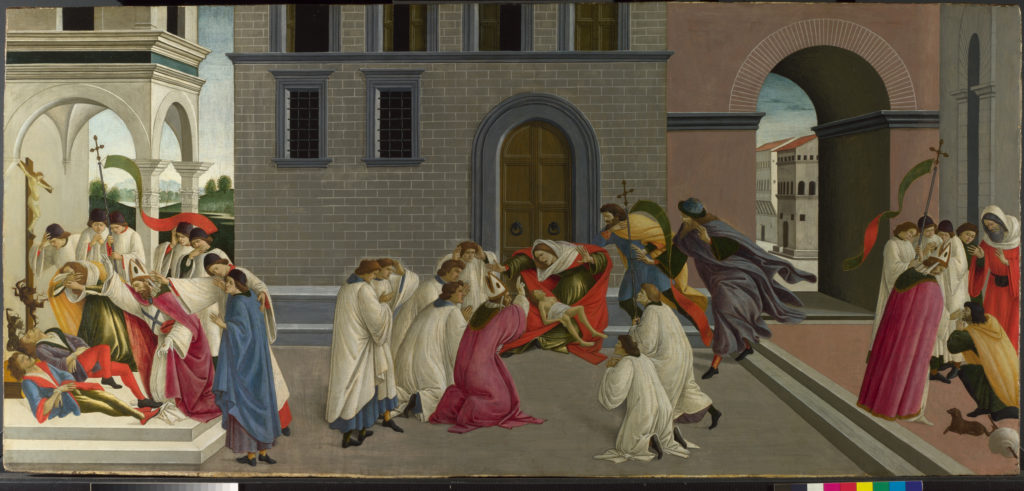
Sandro Botticelli, Three Miracles of Zenobius (ca. 1500). © National Gallery, London/ Art Resource, NY.
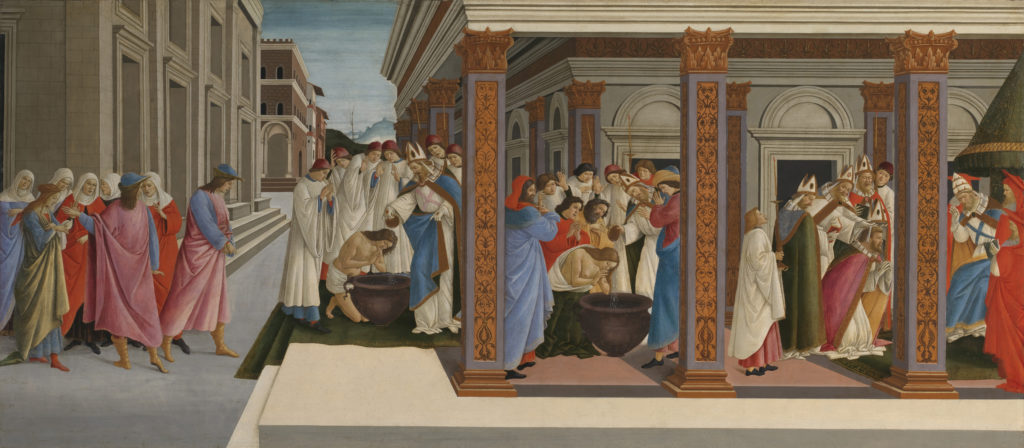
Sandro Botticelli, Four Scenes from the Early Life of Zenobius (ca. 1500). © National Gallery, London/ Art Resource, New York.
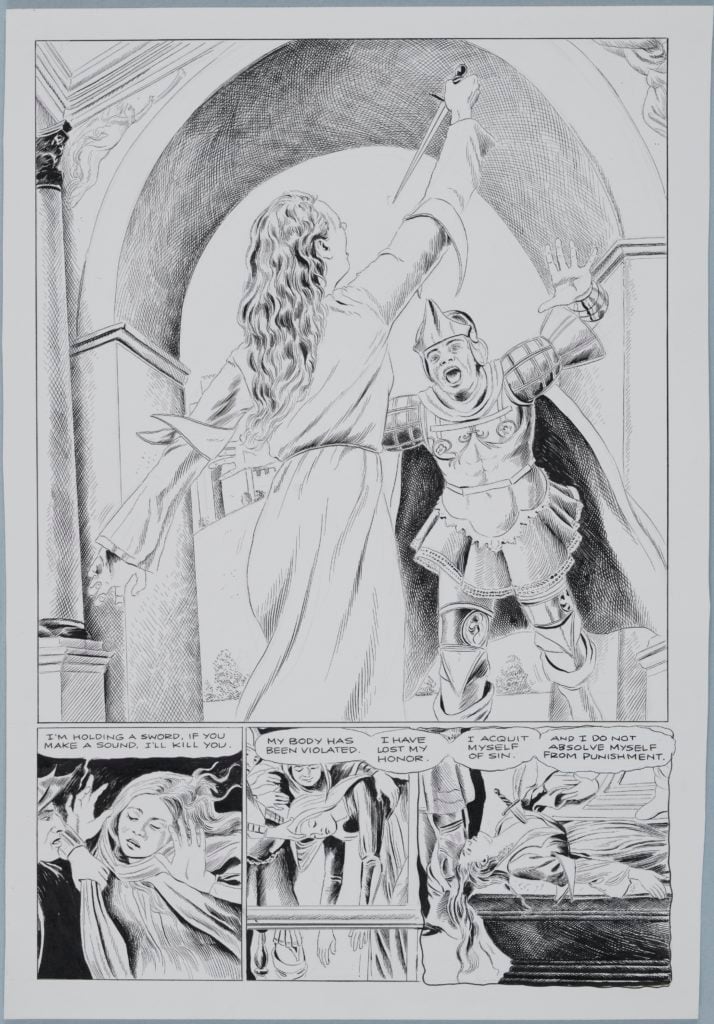
Karl Stevens, Lucretia (2018). © Karl Stevens 2018.
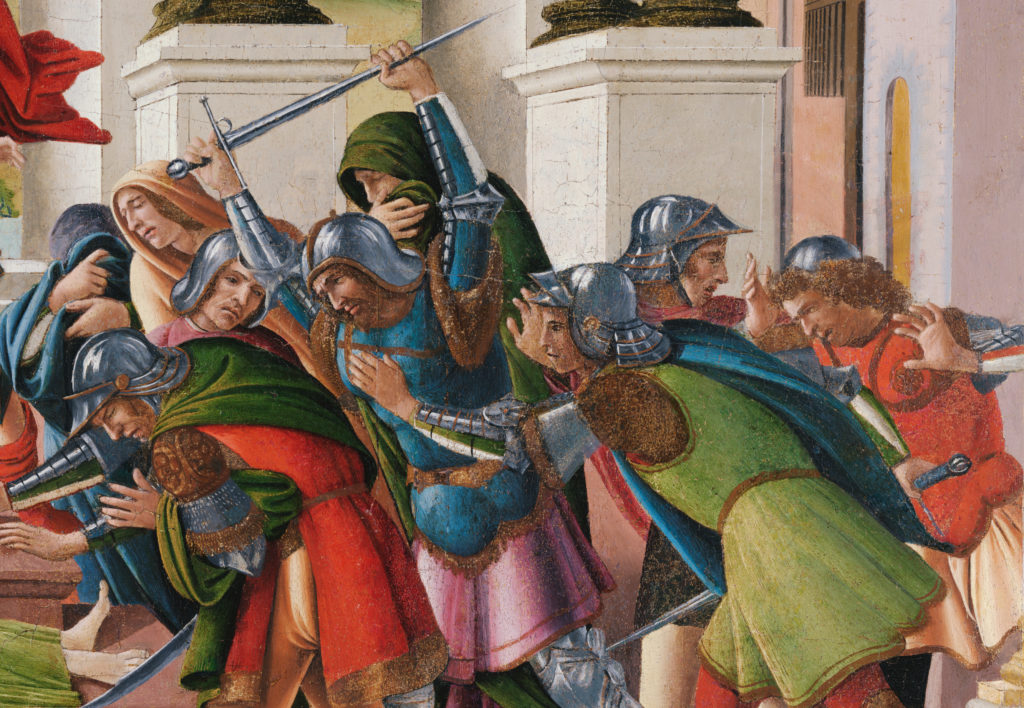
Sandro Botticelli, detail of The Tragedy of Lucretia (1499–1500). Courtesy of the Isabella Stewart Gardner Museum, Boston.
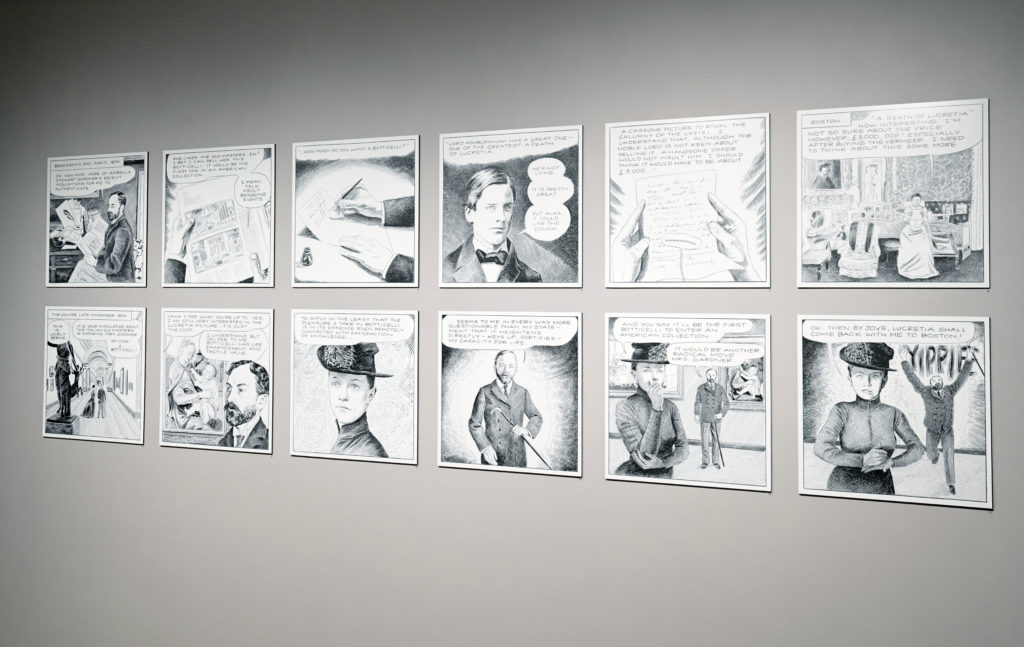
Installation view of “Botticelli: Heroines + Heroes.” Courtesy of the Isabella Stewart Gardner Museum.